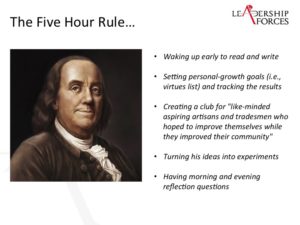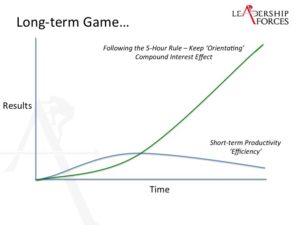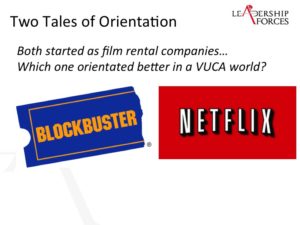When I left Royal Marines Young Officer Training in December 2006, 3 Commando Brigade were serving in Afghanistan. This meant that about half of the recently trained Officer batch would pass off the parade square and fly to Helmand Province to lead Royal Marines on Operations within a week.
Reflecting on this, I remember there being palpable excitement as Young Officers prepared themselves to go and do the job that they’d been trained to do. No one was scared – or if they were, they weren’t showing it.
Fast-forward three months and when the Brigade returned, a large number of Officers and NCOs were sent to support the training of my Unit, 40 Commando. In the quieter moments, I asked people what it was like out there. I wanted to understand the environment for two reasons –
- So I could mentally prepare by knowing what we’d be facing.
- Because I wanted to get the ‘inside track’ knowing that my mistakes would probably have severe consequences for other people.
The majority of people I spoke to told me how much they enjoyed the experience. They described fighting in Afghanistan in 2006 as ‘exciting’. The Taliban would start shooting at them, they’d return fire and perhaps call in some air support and indirect fire missions.
The perception I got from these conversations was that we were ‘winning’ most of the engagements with the Taliban – and that felt like a good thing…
But I had this nagging sense that if we thought we were ‘winning’, they were probably reaching the same conclusion. And when you’re losing, you start to think about ways in which you can change the game.
So how do you change the game so that you can win?
That is the purpose of this article…
Afghanistan was often described as a VUCA environment – volatile, uncertain, complex and ambiguous. What this meant was that the situation on the ground was completely unpredictable. As Donald Rumsfeld said, there are ‘knowns, unknown knowns and unknown unknowns’.
What this basically meant is that there are a whole load of things going on that we haven’t even started to understand because we don’t even know they exist.
At the tactical level, Troops could find themselves fighting a ‘Three-Block War’. They could be war-fighting, training indigenous forces and delivering aid all within a close (hence three-block) proximity.
- How do you survive in an environment where it is almost impossible to understand what is going on?
- How do you plan knowing that your plan won’t survive the first few hours of its execution?
- How do you set yourself up for success in the VUCA environment?
This is where the OODA loop adds the most value. The OODA Loop was invented by John Boyd – a former US fighter pilot who was able to articulate the principles required to be successful in air combat. He is arguably the greatest strategic thinker you’ve never heard of.
There are four steps in the cycle…
Observation
Those with military experience will know it as the ‘relaxed alert’. You’re surveying the room, looking for the ‘presence of the abnormal’. What doesn’t fit?
In the film Spy Game, Robert Redford trains Brad Pitt how to ‘observe his environment’. If you can get this right, you will see things that other people don’t. It is the process of fine tuning your senses to the world around you.
In the business world, at a very basic level, this translates to good data.
How can you run a business if you haven’t created the systems to give you accurate data on which to base your decisions?
More broadly, it might involve reading trade journals or blog articles that are relevant to your market. Perhaps you attend conferences and listen to keynote speakers – or the pitches of your competitors to understand how they do business.
It might even involve looking outside your industry.
- Why have the England Rugby Team gone from being knocked out of the World Cup at the Group stage to winning a series against Australia – with the same players?
- How did a Cycling Team formed in 2010 win the Tour de France twice in four years?
- If you think money/resources are the answer then explain to me how Leicester won the Premiership?
Look at winners across different environments and see what they do to understand how they’re successful. It’s rarely down to luck or natural talent.
But there are two problems with the Observe Phase…
- There is no such thing as perfect information. You will never have the complete picture of what is going on – nor will the information you have be perfect. The world is changing too fast for you to gather ‘perfect information’.
- How do you separate the ‘wheat from the chaff?’ How do you distil what is valuable whilst disregarding the rest?
The simple answer to these questions is ‘Judgement’.
So the question becomes – how do you improve your judgement? This leads us on to the next step.
Orientation
This is the most important step in the model because this is where our ‘mental models’ exist. Mental models are our ways of viewing the world.
The best way I can explain these is to think of a pair of glasses that have been engraved with your own patterns of experience. Everything you see and feel comes through this lens of experience.
Let me bring this to life with an example. The following is a simple test of Type A vs. Type B personalities that I learnt on the Barefoot Coaching Course.
Take the test and work out which side you lean towards. I say lean towards because none of this is fixed. You can always change your own behaviour.
Being a Type A/B is an example of a mental model. It is a success strategy, which you have formulated. You have probably reinforced it because Type As have a tendency to be ambitious, driven and highly goal-orientated. They then achieve these goals ‘reinforcing the Type A philosophy within them’.
I am a classic Type A personality as are most Royal Marines. I know that this is my natural state – and sometimes when I am at my most happy! I am so goal-orientated that I will sometimes write to do lists retrospectively so that I can get the satisfaction of crossing things off! It’s ridiculous – I know – but I still do it.
The problem with leaning towards a Type A is that if you exist in that state all the time, you struggle when things don’t go as you expect them to.
How would a Type A personality react if the service in a restaurant was slow? Chances are, they’d get irritated by it. Type B personalities go with the flow and don’t get stressed about this sort of thing. They’re able to relax more easily.
I have an infant son who is less than a month old and a three year old daughter. If I am with them and in Type A mode – I tend to be checking my phone, looking for things to do and can be impatient when they don’t do things as quickly as I’d like. This is an example of where the Type A approach is inappropriate.
The ability to get present to ‘where you are’ and ‘where you need to be’ is crucial to both success and happiness.
‘I am at work – time to switch into Type A mode’ vs. ‘I am at home with my children, I need to get into Type B and enjoy the fact that they are only young once’.
This is what orientation is all about. It’s about taking mental models, approaches and ways of thinking. Breaking them apart by challenging them, taking what is valuable and discarding the rest.
Think of it as building a toolbox of approaches – that you are then able to customise to whatever job you need to do or situation you find yourself in.
The key to orientation is to remain broad – ‘it is better to have a wide range of tools rather than several hammers’.
These are the things that are working for me now. I make an effort to look beyond these highlights so that I am confident that I am getting inputs from the best ‘thought leaders’.
 The reason I have included outputs here is that your outputs force you to think about what you have learnt, what have you taken onboard and how does it fit in with things that you are noticing? My last article on ‘The Real Reason the Military works’ is an example of this.
The reason I have included outputs here is that your outputs force you to think about what you have learnt, what have you taken onboard and how does it fit in with things that you are noticing? My last article on ‘The Real Reason the Military works’ is an example of this.
If I asked you to write me 2,000 words on ‘Why Team Sky won the Tour de France’, you’d be forced to research, consider and think about it. That’s what writing forces you to do. Speaking and Teaching force you to do the same. If you believe that there are ‘no bad students, only bad teachers’ it forces you to keep improving how you get ideas across to people. It forces you to make it simpler, clarifying it and using metaphors to help explain the concept. If you can do that – then you know your subject.
Associate work helps me broaden my exposure and work with other people and clients outside of my target market. From a personal perspective, it allows me to generate income (always nice!) whilst getting the opportunity to work with great people such as Unleash and Engage, Fieri, Quirk Solutions and the Pecan Partnership.
The key is to keep building and breaking mental models to improve your own judgement.
That’s how you win.
This isn’t new. It is just taking the ‘explicit and making it implicit’. Ben Franklin was doing this years ago. He had his ‘Five Hour Rule’ whilst Abraham Lincoln understood the value of ‘Sharpening the Axe’.
 Both approaches yield a long-term return. Why?
Both approaches yield a long-term return. Why?
Because they take advantage of the compound interest effect.
If you regularly spend time ‘improving yourself today so you are better tomorrow’, you will reap the rewards in the long-term. People that can do this become ‘invaluable’ very quickly.
Decision
This is relatively straight-forward. The orientation phase generates a ‘course of action’. The only thing you need to remember here is that it is impossible to select the perfect approach because any decision is going to be based on ‘imperfect information’.
Work out the solution that is ‘good enough’ and go for it. ‘Analysis Paralysis’ or procrastination is a form of decision-making. You are unconsciously choosing to ‘burn time’. Can you really afford to do that?
If there are two courses of action and you are really struggling to work out which one to take, chances are, the outcomes will not be very different. Pick one quickly and get on with it.
Act
This where we do something allowing our actions to feed back into the system. Are our mental models working? If not, then we need to ‘double-loop learn’ and make a change. This is why it’s no good having one tool in the box or reading books by just one author.
Competition and Tempo
This is a system designed to beat your competitors. If you can move through this loop faster than your opponent, you will start to change the environment. This causes them to ‘get stuck’ in the observe/orientation phase. It resets their OODA loop by causing confusion, dislocation and panic.
A Fast Tactical Example
The best tactical example I can think of is from the Tom Cruise movie ‘Collateral’. It’s a bit violent but it makes the point!
As the muggers approach him, Cruise is observing and probably starting to orientate himself to the threat. He allows them to move close enough before deciding to act and grab the mugger’s gun. Neither of them expect it so they don’t know how to react.
They’ve probably mugged plenty of people who’ve handed their valuables over. This has created a mental model. When Cruise doesn’t conform to it, they cannot react quickly enough. Cruise’s ability to react is based on how he has orientated to the threat. He’s ‘capable, competent and experienced’ at handling a weapon at close range.
This is an example of the OODA loop being used to overcome an adversary. For the avoidance of doubt, I do NOT recommend that you take on and attempt to defeat a mugger.
Rapid increases and decreases in tempo cause problems for your opponent. During the Rumble in the Jungle, Muhammed Ali knew what George Foreman was going to do. He knew that he’d come after him and attack early going for the knockout. After several rounds of punishment with little effect, Foreman was exhausted. This was when Ali started his attack. It was called the ‘rope-a-dope’ but in actual fact it was the OODA Loop in practice.
Deception and Surprise are powerful tools.
A Strategic Business Example
Consider Blockbuster Video and Netflix. Both started life as film rental companies, moving to DVDs. Blockbuster were the market leader with large high street stores. Netflix were online and used the postal service to get DVDs to/from customers.
But the world was starting to change. Internet speeds were getting faster and the internet was reaching more people. This wasn’t a surprising trend. The pace of technological change has been exponential for years.
Netflix were able to ‘observe’ this and ‘orientate’ themselves to ride the wave of this change. They were able to move into ‘online streaming’ just as Internet speeds allowed people to download high-resolution video at a rapid pace.
These changes were expected and relatively predictable. Netflix were just able to orientate themselves to ride with the wave as opposed to against it.
We all want to be ‘disruptive, innovative and agile’. The OODA loop helps us understand decision-making at the high-speed tactical level as well as at the more strategic level. It doesn’t matter how fast you are, so long as you are faster than your opponents.
The world is a VUCA environment – the news keeps reminding us…
- Volatile – Terror attacks in France.
- Uncertain – The UK vote to leave Europe, the rise of Donald Trump. Neither of these were predicted.
- Complex – How does an iPhone work? The products we take for granted are more complex than ever.
- Ambiguous – The world is ‘shades of grey’. Not much is black and white and easy to understand.
The way to survive in the VUCA world is to understand and apply the OODA Loop.
Darwin was right. It is not the strongest of the species that survives… it is the one that is most adaptable to change’.
How adaptable are you and your organisation to change?
What is does your orientation process look like – how are you spending time today to get better tomorrow?
Which line are you on?
Save
Save
Save








